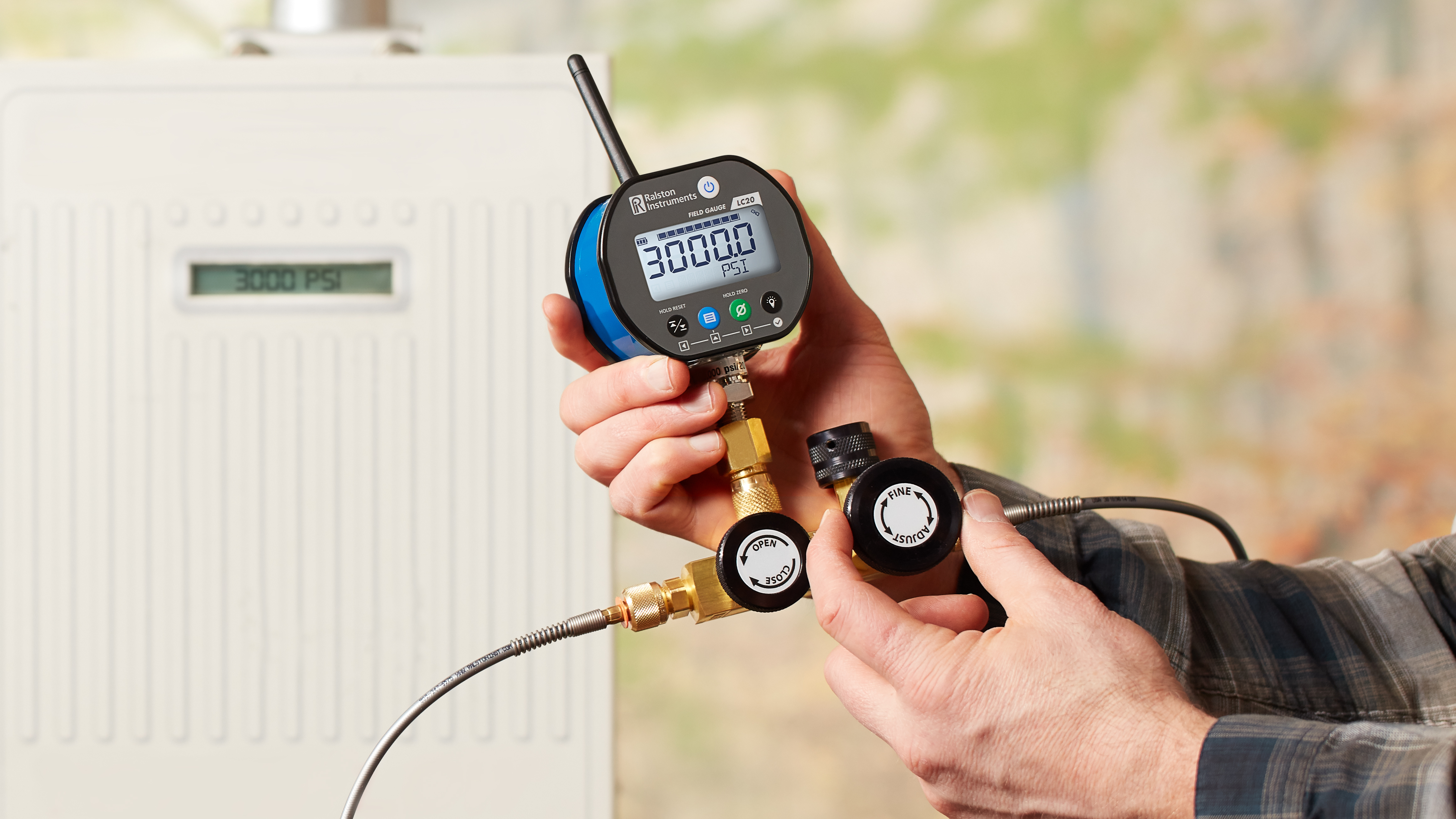

Since our humble beginnings in a 200 sq. ft. basement, Ralston Instruments has been a driving force in the pressure calibration industry, pushing the boundaries between the standards and the possibilities. Upon reaching our 50 year anniversary, we'd like to spotlight a few of our most trusted and time-tested products that have helped us get to this point.
The Calibration Manifold has been around for over 30 years, but it’s still just as gratifying to demo it to techs who are new to the industry or seeing it for the first time. They immediately recognize the value in this modest device. To understand why this hand-held compressed gas controller continues to receive such a strong reception, it’s worth a little history lesson about what was going on with pressure calibration at the time it was developed.
Every industry evolves over time. As new products are developed, processes become more streamlined, and standards are adjusted to reflect the technology of the day. The introduction of the pneumatic hand pump in the late 1960s was a major step in simplifying the complicated pressure testing processes, and the hydraulic hand pump, for higher pressure applications, soon followed.
But by the 1980s, the industry began a shift toward the use of compressed nitrogen for calibrating pressure instruments. It was inexpensive and readily available, and while hydraulic fluid was most effective for high pressure (500-5000 psi), nitrogen could generate both high and low pressure. In addition, compressed gas is more stable and provides better control than hydraulic fluid.
While the use of compressed gas continued to grow in popularity, there was no easy way to use it. According to Doug Ralston, Sr. VP of Operations and creator of the Calibration Manifold,
"At the time, people kept telling us that while they were using nitrogen for calibration, the valves they had weren’t very good, they needed a regulator and a bleed valve, etc. They were cobbling things together at home with some pipes and fittings, and it just wasn't working as well as they would’ve liked."
Pressure regulators are designed to work with flowing gas or liquid. They simply don’t function as well when there is no flow. There’s always a risk of hysteresis error due to over-shooting or under-shooting a test point, and a lot of compressed gas is often wasted using a regulator and needle valves to fill and vent pressure. It’s a flawed system.
Inspired by these conversations with techs in the field and armed with our knowledge of the industry, we set out to simplify the process of pressure testing with compressed gas. The idea was to develop a small module that lets you hook up a compressed gas cylinder at one end and a device to be calibrated on the other, with a pressure port for a gauge in the middle. We included a fine adjust piston and fill and bleed valves to give you smooth, precise control of pressure right at the DUT. All of the ports and included hoses feature our unique Quick-test fittings, which can be attached and detached without a wrench or thread sealant. It’s straightforward, intuitive, and a huge improvement over bulky DIY setups using a pressure regulator and needle valve.
If you perform static pressure calibrations in the field with nitrogen and you’re frustrated with the process of over-shooting and under-shooting to reach your target pressure, we’d love to introduce you to the Calibration Manifold.
Regardless of the process being controlled, Ralston Instruments makes a compressed gas control device to serve the purpose. Made in America using the highest grade parts, our manifolds are the most economical way to perform static pressure calibrations in the shop or in the field. Select a single manifold or opt for the convenience of a fully integrated calibration kit – either way, our units adapt to your needs.
Ralston Instruments is a family-owned leader in pressure calibration and test equipment, trusted worldwide for durable, high-performance systems that simplify testing and deliver traceable, accurate results. From hydrostatic testing to digital pressure monitoring, Ralston solutions improve accuracy, efficiency, and safety across field and lab applications. All products are designed and manufactured in the USA.